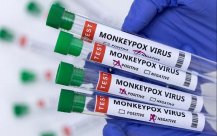(San Francisco Comprehensive Electric) Researchers have found that the feces of patients with coronary disease still carry coronal virus within a few months after infection, which causes people to worry that the continuous existence of the virus will affect the immune system, which will lead to long -term crown disease sequelae sequelaeEssence
Researchers at Stanford University in California, California, carried out the largest follow -up survey of the symptoms of 113 patients with crown diseases and ribirucleic acid virus (RNA) in the feces.Viruses will be excreted in the feces, 13%are still excreted viruses after four months, and nearly 4%of patients have a virus in seven months.
Researchers also linked the RNA in the feces with the stomach discomfort of the patient, thinking that the virus may directly infect the gastrointestinal tract, and then hides there.
Associate Professor Bart of Medicine and Genetics at Stanford University said: "It raises a problem, that is, the continuous infection hidden in some parts of the body may be the key to triggering long -term sequelae."
She pointed out that the virus continues to exist in the body, and it may eventually invade cells and destroy tissues, or produce proteins that stimulate the immune system.
Some of the patients with crown disease will have a series of long -term sequelae.Yale University of immunomanology and molecular, cells and developmental biology Iwasaki Mizaki pointed out that at least four different biological mechanisms may lead to long -term sequelae of crown disease. One of them is that the continuous virus may cause destructive immune response.This causes some symptoms that can be cured by drugs.
She said: "I have heard that patients who have long -term sequelae recover after taking antiviral drugs or monoclonal drugs."
Professor Iwasaki revealed: "The intestinal tract is the only place for people to report antigen and RNA." The dissection results of the death disease patients who died wereCoronary virus.She said: "It is unclear at present, how many viruses are continuously existing in the body of coronary patients who have long -term sequelae."
Bart said that the new discovery helps to understand the clues spread from the virus community collected from sewage.She said: "When we are studying epidemiology through wastewater and trying to interpret, it is important to understand how many people are eliminating the virus and the length of duration."




